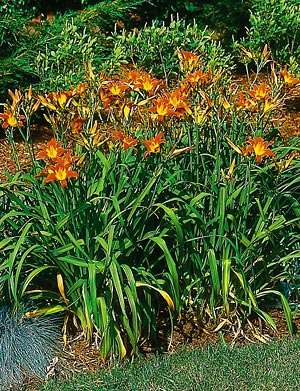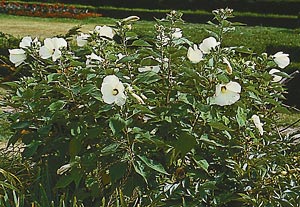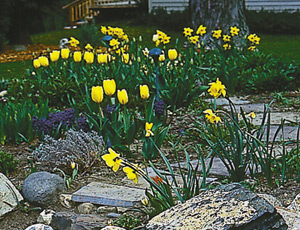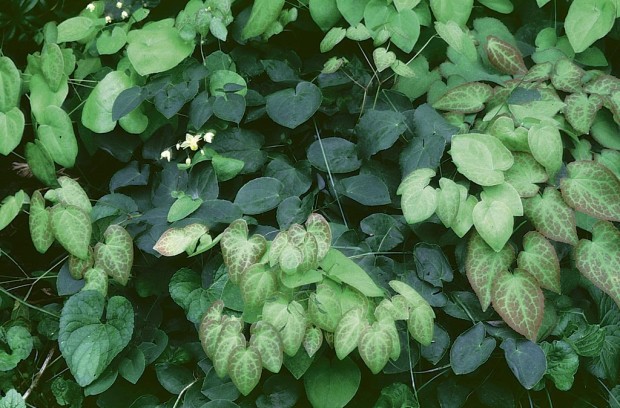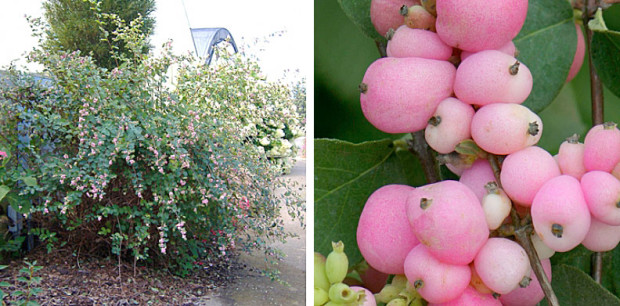 The Association of Specialty Cut Flower Growers recently announced its 2013 Cut Flower of the Year winners, and Amethyst coral berry (Symphoricarpos x doorenbosii ‘Kordes’) was named as the top cut in the woody plants category. The unique shrub from Proven Winners was noted for “masses of hot pink berries which ripen into the fall.” Evaluation is based on recommendations from cut flower growers and the performance in the ASCFG trials, the only national cut flower evaluations. Plants are evaluated across all zones for hardiness, yield, and stem strength.
The Association of Specialty Cut Flower Growers recently announced its 2013 Cut Flower of the Year winners, and Amethyst coral berry (Symphoricarpos x doorenbosii ‘Kordes’) was named as the top cut in the woody plants category. The unique shrub from Proven Winners was noted for “masses of hot pink berries which ripen into the fall.” Evaluation is based on recommendations from cut flower growers and the performance in the ASCFG trials, the only national cut flower evaluations. Plants are evaluated across all zones for hardiness, yield, and stem strength.
Rock Garden Society launches new website
The Great Lakes Chapter of the North American Rock Garden Society has overhauled and updated its website. You can find information about upcoming meetings, past newsletters, photos, links, and lots of interesting material here.
Janet’s Journal: garden cover ups
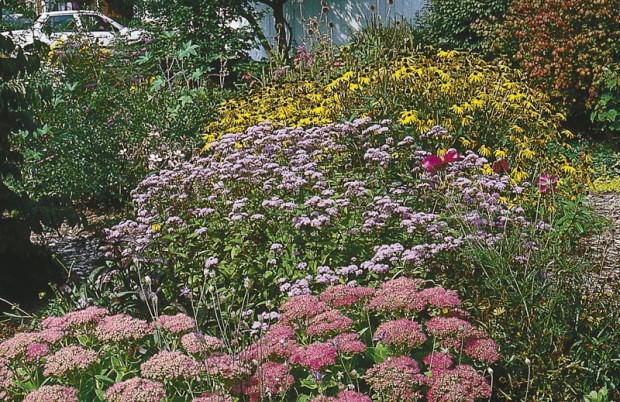
By Janet Macunovich / Photographs by Steven Nikkila
Politics has made “cover up” a dirty term. Its meaning in the garden has more dignity, although there’s still soil and clever timing at the base.
Spring can be like the glorious first days of a new administration that was voted in by a large majority. Such excitement and promise!
For shame, then, that I’m already looking for a cover up.
The crocuses (especially the early favorite snow crocus, Crocus minimus), snowdrops (Galanthus nivalis), winter aconite (Eranthis hyemalis), wood anemones (Anemone blanda), squill (Scilla sibirica), and puschkinia (Puschkinia scilloides) are not of concern. Early to rise, small in stature, and blessed with fast metabolisms, they’re up, bloomed, and neatly gone by early June. Even the grape hyacinth (Muscari sp.) and early species tulips (Tulipa praestans, T. tarda, T. greigii hybrids) of late April and early May aren’t bad—they are short enough and early enough to be only minimally distracting during their exit.
But oh, those daffodils and late tulips! How many times have I muttered over their tired-looking but still green foliage lying around to spoil even July’s show, and vowed never to plant another of these lackadaisical leave-takers? I’ve come close to swearing off bulbs all together, especially when I add in problem children such as the very early bulb iris (Iris reticulata hybrids), which bloom only 3 to 4 inches tall, but follow up with 18 inches of grassy foliage that remains into June, sticking up through other plants begging to be mistaken for invading grass.
Additional challenges present themselves in the form of grassy tufts of fall crocus foliage (Crocus kotschyanus) and clumps of wide, strap-like leaves from colchicum (Colchicum autumnale). What to cover that bare spot during mid-summer, but make it visible again in early October when their short-stemmed, lilac-colored flowers show?
Every year I stumble on, steal, dream up, and improve on techniques to usher bulb foliage out more gracefully. I’m sharing some of my best cover-ups here.
Ploy #1
Bring in a sleeper perennial and create a distraction while the two switch places. During this transition period, it helps to create the distraction to one side, with something showy and loud such as bearded iris, early daisy (Leucanthemum varieties) or poppy (Papaver orientale).
Many perennial species wait until the soil warms up to emerge. Many of these sleepers peak in late summer and fall, giving that area of the garden a whole new face for that late season. Planted among the bulbs they are meant to hide, these perennials rise gradually among the bulb foliage, giving the opening act time to ripen and die back its foliage before being swallowed up:
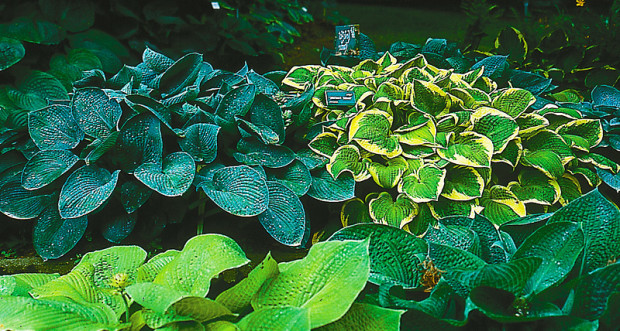
Hardy hibiscus (Hibiscus moscheutos). Most first-time growers of hibiscus figure it died over the winter, since nothing shows until early or mid-May. A lover of moisture, hibiscus is well-suited to cover bulbs that also like lots of water, such as quamash (Camassia sp. and hybrids) and bulb iris.
Joe pye and its relatives (Eupatorium sp., especially E. coelestinum, the perennial ageratum or blue mist flower). These are often hard to find because garden centers can’t seem to sell them well. In spring, they look like and have all the sales strength of pots of soil. Given a week of warm nights though, they pop up like weeds. Perennial ageratum is worth hunting for, however. Blue flowers in August on 18-inch stems, shallow running roots that allow it to weave among bulbs without interfering with their growth, and a high tolerance for shade are all marks in its favor.
Japanese anemone (Anemone x hybrida). This gem is best for half shade, but willing to perform decently in sun or shade, it too holds back on leaf production until the soil warms, then surges up to hide its predecessor. Coming from many thin, running roots, it doesn’t form dense crowns that can eventually impede a companion bulb’s entry. Its pink, white or mauve flowers on 36-to 48-inch stems are showstoppers in August or September.
It’s best to interplant established bulbs with small, bare root pieces or small pots of these companions. Look for one-quart pots or even smaller plugs.
Ploy #2
Establish a self-sowing annual among the bulbs. Pot marigold (Calendula officinalis), garden balsam (Impatiens balsamina), love-in-a-mist (Nigella damascena) and bells of Ireland (Moluccella laevis) are some that I use. Sow the seeds now, pressing them into the soil among the bulb foliage and withholding mulch there until they can emerge and be thinned.
Ploy #3
Plant a late spring-or summer-blooming perennial with similar foliage to mask the bulbs’ exit. Daylilies (Hemerocallis) and daffodils are a classic. Sea pink (Armeria maritima), with its grassy foliage, is a natural to hide fall crocus. Blue fescue (Festuca glauca) does a great job of absorbing and hiding bulb iris foliage.
Ploy #4
Provide a perennial with wide skirts to spread across the top of the bulb area. Hostas do a great job of hiding bluebells (Mertensia virginica and Scilla campanulata). Perennial fountain grass (Pennisetum alopecuroides) does an admirable job of masking a tulip’s departure.
Ploy #5
Use die back shrubs that can be cut back hard in early spring as early bulbs under its branches are beginning the show. Butterfly bush (Buddleia davidii) and giant allium (Allium giganteum) are a natural combination. Bluebeard (Caryopteris x clandonensis) and other, shorter alliums work well together (Allium moly, A. neapolitanum, A. roseum, A. caeruleum).
Have fun trying these!
Janet Macunovich is a professional gardener and author of the books “Designing Your Gardens and Landscape” and “Caring for Perennials.” Read more from Janet on her website www.gardenatoz.com.
Seed patent suit heads to U.S. Supreme Court
NPR’s The Salt:
This week, the Supreme Court will take up a classic David-and-Goliath case. On one side, there’s a 75-year-old farmer in Indiana named Vernon Hugh Bowman; on the other, the agribusiness giant Monsanto.
The farmer is fighting the long reach of Monsanto’s patent on seeds — but he’s up against more than just Monsanto. The biotech and computer software industries are taking Monsanto’s side.
Bowman also is battling a historic shift that’s transformed the nation’s seed business over the past 20 years.
Top performing annuals in 2012
Michigan State University Extension:
Each year, the Michigan State University Horticulture Demonstration Gardensevaluates hundreds of new annuals grown from seed or cuttings. Trial selections are supplied by private breeding companies and the plants are grown in MSUgreenhouses and transplanted into either ground beds or containers after the last frost has passed which is late May or early June.
Cut stems brighten the winter indoors
These forced forsythia blooms brighten up the Michigan Gardener office as we prepare our first issue of 2013—coming in early April!
Forsythia courtesy of Backyard Bouquet Farm
Weeping Norway Spruce encrusted with snow

Libraries discover new role lending seeds
NPR:
Despite the cold and snow, some signs of spring are starting to break through in Colorado. The public library in the small town of Basalt is trying an experiment: In addition to borrowing books, residents can now check out seeds.
In a corner of the library, Stephanie Syson and her 4-year-old daughter, Gray, are just finishing a book with a white rabbit on the cover.
When Gray approaches the knee-high shelves filled with seed packets, she zeroes in on a pack labeled “rainbow carrots.”
Janet’s Journal: Look beyond flowers to foliage

By Janet Macunovich / Photos by Steven Nikkila
Much can be said for standing on one’s head. Surprising discoveries await for anyone who will take the time to take a different perspective.
Take garden design for example. “Spring flowers” is a cliché that colors our lives from children’s books to classic literature. So we go into garden design with an overwhelming bias toward flowers. Designs start and sometimes end with pairs made solely for bloom — red tulips (Tulipa ‘Red Riding Hood’) that will bloom with basket of gold (Aurinia saxatilis), blue ajuga (Ajuga repens) with pink species tulips (Tulipa pulchella).
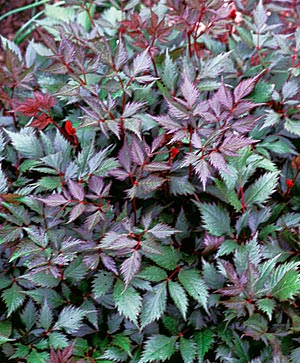
Now try that headstand. Change something, radically. Assume, for instance, that all flowers are invisible. See what happens? Notice anything new? Flowers are, in fact, invisible during the early part of the season. Once the search for flowers ends, we notice that April is full of glorious foliage. Gardens are beautiful regardless of the flowers.
We see leaves, stems, and buds that are fresh, crisp, saturated, unmarred blue, chartreuse, gold, maroon, silver, and other hues intense beyond description. The tones change by the hour and the day, like the very best sunset, so rich and glossy it might be oil on canvas not yet dried. At least once in every lifetime this spectacle grabs the eye, arrests thought, and makes us dewy-eyed about spring.
Then we become jaded. If it doesn’t have or can’t be made to look like it has a big, bright flower, preferably one that looks like a rose, we don’t even see its other qualities.
Think about a favorite garden plant. Now, name its early spring color. Can’t put your finger on it? Maybe your view has been muddied by the “floral perspective.”
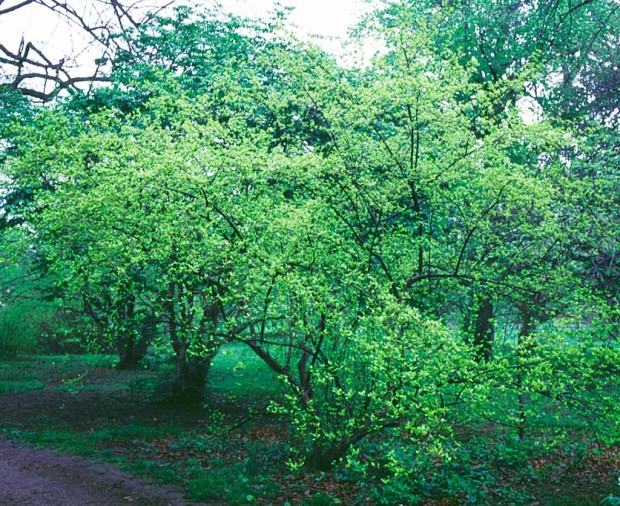
What’s more, we’re often still indoors when spring foliage charm takes the stage. Anchored by our winter weight, looking solely for “the first flower,” we miss spring’s entire opening act.
It’s an act that begins long before the flower garden becomes a feature in the landscape. It’s a toe-tapper, guaranteed to overcome off-season inertia and renew one’s faith in the natural world. Make an effort to see it, design for it, and be there.
Take this different, non-floral view as you start into a new design or plan a new perennial, shrub or groundcover combination. Spark the burgundy foliage of emerging peony with the gold of lemon thyme. Reflect the peeling bud caps of quince in the brick-red edge of epimedium leaves. Have some fun and get an extra month from your garden design.
Don’t be surprised if you stop caring about the flowers and they become the surprise.
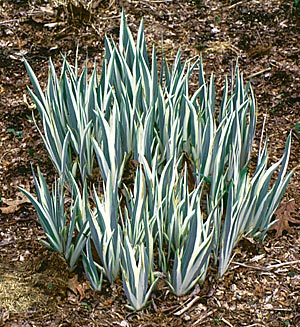
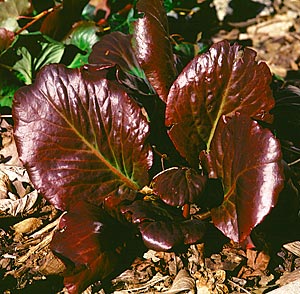
Some starters:
A climbing rose with foliage that opens bronze-red (‘Henry Kelsey’ is one), against the white peeling bark and lime green leaf buds of seven-son shrub (Heptacodium miconioides)
Blue hostas (like Hosta ‘Blue Cadet’) with Irish green sweet woodruff (Galium odoratum).
Glossy maroon new foliage of Bergenia cordifolia with the silver blue fiddle heads of Japanese painted fern (Athyrium niponicum ‘Pictum’).
‘Red Carpet’ Sedum, intensely scarlet at the feet of furry, grey-green large-flowered comfrey (Symphytum grandiflorum).
The deep violet foliage of shrubby Clematis recta ‘Purpurea’ leaning against the supportive stems of Ural false spirea (Sorbaria sorbifolia), simultaneously leafing out an indescribably rich, red-edged green.
Janet Macunovich is a professional gardener and author of the books “Designing Your Gardens and Landscape” and “Caring for Perennials.” Read more from Janet on her website www.gardenatoz.com.
The comeback of American chestnuts
The Salt Blog at NPR:
Though we hear about them every holiday season in that famous song, chestnuts – whether roasting on an open fire or otherwise – have been noticeably absent from many American tables for decades, thanks to a deadly fungus that decimated the species near half a century ago. But a small army of determined growers have been on a seemingly quixotic quest to put chestnuts back on the American table, and they’re just starting to see results.
- « Previous Page
- 1
- …
- 36
- 37
- 38
- 39
- 40
- …
- 43
- Next Page »

